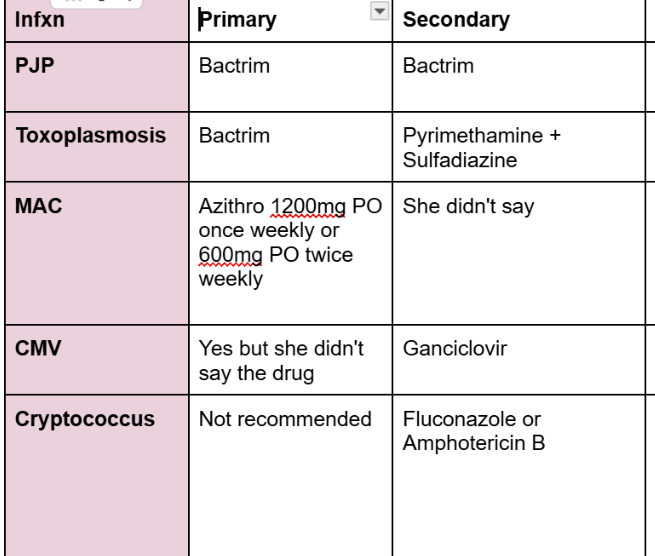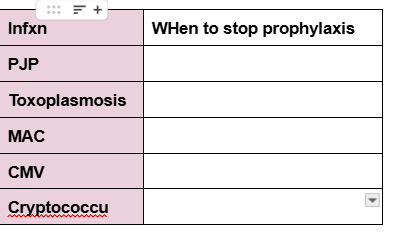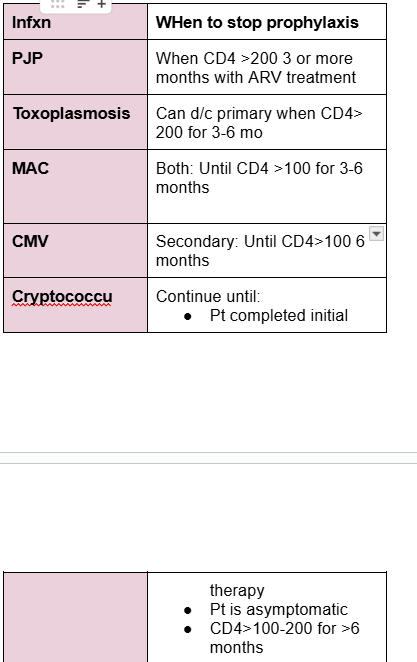Opportunistic infections in immunocompromised
1/7
There's no tags or description
Looks like no tags are added yet.
Name | Mastery | Learn | Test | Matching | Spaced |
|---|
No study sessions yet.
8 Terms
Identify medications for and efficacy of Pre-exposure prophylaxis
Tenofovir DF/Emtricitabine
Tenofovir AF/Emtricitabine
Cabotegravir for IM injection
Monitoring: HIV testing, Scr, STD testing
Recognize preferred anti-retroviral therapy choice for post-exposure prophylaxis
Timing: Medication must be started within 72 hours
Tenofovir DF/Emtricitabine OR Tenofovir AF/Emtricitabine
PLUS
Raltegravir or Dolutegravir or
Bictegravir
oPEP vs nPEP
oPEP: Occupational
nPEP: Non-occupational
Identify common opportunistic infections for immuno-compromised patients
Cytomegalovirus (CMV)
Toxoplasmosis
Mycobacterium Avium (MAC)
Pneumocystis jerovici (PJP)
Cryptococcus
Tuberculosis
Oral Candidiasis
Kaposi’s Sarcoma
Herpes
Determine CD4 count at which patients require opportunistic infection prophylaxis for: PJP, Toxoplasmosis, MAC, CMV, Cryptococcus


List preferred drugs for primary and secondary prophyalxis of each


When can you stop prophyalxis for each?

Do we need candidiasis (thrush) prophylaxis?
No- rarely life threatening